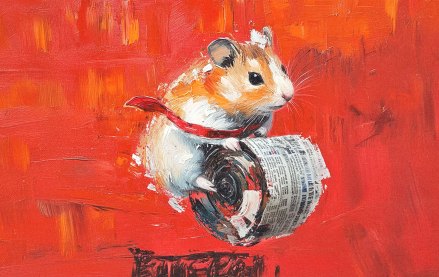Connect with execs from The New York Times, TIME, Dotdash Meredith and many more
DAZN Media isn’t short of interest from advertisers that want to capitalize on its OTT player offering. But the digital sports media owner doesn’t want that to be to the detriment of its display and video businesses. As such, it has worked hard to simplify the pitch of its ad packaging across its multiple brands spanning 30 markets.
Since January, the media owner has built out DAZN+, a network that aggregates the reach from its owned sites such as Goal, Sporting News and DAZN Player (formerly ePlayer) alongside partnerships with social networks, influencers, talent, rights owners and stadium owners. Where those deals were previously managed individually by the various parts of Perform Group, they are now all pooled under the DAZN banner as the business tries to drive higher CPMs from premium programmatic inventory sold to ad buyers directly.
Before, DAZN sold in a convoluted way, selling its sites separately across multiple fragmented markets. Now, those same sites are sold together based on contextual targeting and audience segmentation. Being able to aggregate audiences across several sites makes it easier for DAZN to sell its ads at a fixed price and guaranteed delivery of inventory as well as in private marketplaces.
Like other media owners, DAZN wants a plan to drive programmatic-direct deals, which incorporate PMPs and programmatic guaranteed, to capture the dollars moving from insertion orders into programmatic. Eight in 10 media buyers plan to direct more of their budgets to the channel this year, according to a Digiday study of 214 media buyers. DAZN declined to reveal how much of the revenue for DAZN+ comes from programmatic, though head of trading David Winstone said it is key to how that part of the business makes money — so much so that the business has recruited programmatic experts across the eight markets it has launched in, including Japan and North America, and is currently looking for an ad server to help it manage how its ads, including those sold programmatically, are traded.
“We’re definitely seeing an appetite in the market to execute more frequently on a programmatic guaranteed basis,” said Winstone. “Programmatic is key to what we do on the DAZN+ side of the business as most of what we trade is via PMPs and programmatic guaranteed.”
The problem with programmatic-direct pitches like these that promise advertisers visibility and control over the publisher sites they buy ads on, is that they can sometimes offer the same impressions an advertiser could have found in the open marketplace more cheaply. It’s an issue for a publisher like DAZN, which has decided against aggressively pulling its ads from the open marketplace in order to reach those advertisers that still use it as a testing ground to find publishers that could create private marketplaces in future. “Some of our inventory is still traded through the open marketplace as we want to be agnostic in terms of how we go to market,” added Winstone.
To make its programmatic-direct business more appealing, DAZN has begun pitching advertisers six creative units that mix real-time sports data and live scores into display and video creative. The data for all six units is sourced from Opta, the sports data provider owned by DAZN. Early tests of the formats, which include expandable mobile banners and double MPUs, have seen interaction rates at 8% higher versus Moat benchmarks, while the hover rate is at 25% higher, according to DAZN.
Opta has been the area of focus for DAZN recently, but the brand has fallen behind some of the more social-first publishers like Joe, GiveMeSport and LadBible in creating an opportunity that provides engagement with sports fans — rather than just eyeballs, said Jonathan Harrison, digital account director at the7stars. “The new launch looks to address this balance alongside quality journalism, which can only be seen as a positive addition,” said Harrison.
DAZN is hoping its aggregated offer benefits from the rise in popularity of women’s sports. 2019 is a big year for women’s sports with this summer’s FIFA World Cup and that is likely to be reflected in advertising spend as evidenced by the likes of the Telegraph and GiveMeSport producing more content around women’s sporting events.
More in Media

YouTube’s AI slop crackdown has creators concerned, marketers cheering
Despite the potential crackdown, both creators and marketers broadly view YouTube’s updated policies as a positive move. They believe it indicates that the platform is paying attention to the ways creators are using AI — and that it’s open to AI tools that don’t result in the propagation of so-called “AI slop” videos.

Jargon buster: The key terms to know on AI bot traffic and monetization
Here’s a breakdown of the emerging vocabulary of AI-media economics, what these terms mean, and why they matter now.

Digiday+ Research: Publishers identify the top trends among Gen Z readers
Gen Z makes up a very small percentage of publishers’ readership, but those Gen Z audience members are consuming their news anytime, anywhere.








